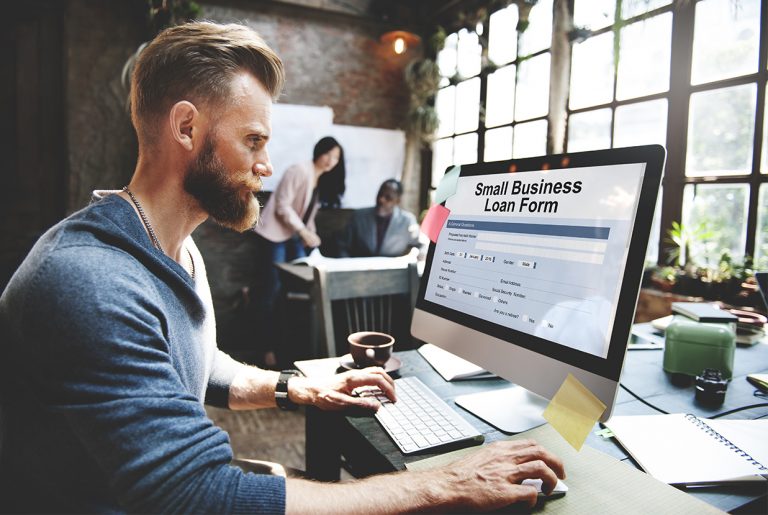While everyone has felt the effects of the COVID-19 pandemic, businesses have suffered in a unique way this past year. As the virus began to spread in March, many businesses voluntarily closed. Then, many were forced to stay closed due to lockdown restrictions. Even today, nearly a year later, local and state requirements are keeping businesses shuttered or functioning at decreased capacity.
The impact has been massive as businesses are doing everything they can to stay afloat, from cutting hours to laying off staff to getting creative with how they provide their services. But for many small businesses, losing even a week’s worth of revenue threatens their survival, and tens of thousands of businesses have closed their doors permanently due to the pandemic.
For those who are still open, more relief is now available as part of the new $900 billion COVID-19 relief bill that was passed on December 20, 2020. The bill renews the Paycheck Protection Program (PPP) from last year, with new funding and broader eligibility. The following are the most common questions small businesses have about the loan program and the short answers they need.
What is the PPP?
Created under the CARES Act of March 2020, the PPP provides loans to businesses, independent contractors, nonprofits and other entities in order to help them continue to pay their employees during the COVID-19 shutdowns. PPP applications were initially accepted up until August 8, 2020, which included two rounds of loans. On December 20, 2020, the PPP was reopened with $284 billion set aside for new businesses to apply. It also offered a chance for a “second draw” to businesses who received PPP funds last year. PPP loans are available through the Small Business Association’s (SBA) affiliated lenders.
How is this program the same or different from the first one?
This is round three of the PPP that began last year, so it isn’t a new program but an extension of the old one. (Round one, with $349 billion in funding, ended on April 16, and round two, with $320 billion in funding, ended on August 8.) However, this round expands eligibility to include more businesses or entities that may need the money, as well as expanding the criteria of what the money can be spent on.
Who is eligible?
PPP loan money is available to small businesses that meet the SBA’s size standards per industry. Also eligible are sole proprietors, independent contractors and those who are self-employed. Additionally, any business in Accommodations and Food Services with more than one physical location and less than 500 employees per location, and any 501(c)(3) non-profits, veterans organization or tribal businesses are also eligible.
What can I spend the money on?
Originally, the PPP was designated to cover payroll only (thus the name Paycheck Protection Program). But businesses are also able to use the loan funding on rent or lease payments, utilities payments, mortgage interest payments or other operational expenses. In order to be eligible for forgiveness, the business must use at least 60% of the PPP for payroll coverage. Businesses are also able to cover expenses like property damage, supplier costs and other work protections with their PPP loan.
Do I have to claim the loan?
No. Businesses do not have to pay taxes on forgiven PPP loans.
Will I get reimbursed or do I have to pay the money back?
Loans will be forgiven if businesses use the funds within the aforementioned parameters (for payroll, mortgage, rent, utilities, etc.), and follow the guidelines for documenting and showing their expenses. Reimbursement forms can be submitted up to ten months after the last day of coverage. If borrowers don’t apply for forgiveness, they’ll pay back the loan at 1% interest.
I applied for and received a loan the last time. Can I get one this time?
Businesses looking for a “second draw” loan are subject to a few restrictions. Their loan application can’t exceed $2 million, and second-draw funds will only go to businesses with less than 300 employees and a demonstrated loss of 25% in revenue over 2019.
Last time bigger businesses received funding, and then it ran out, leaving some small businesses without anything. What will happen now?
Because of the imbalance of issued loans during round one, round three has some restrictions that focus on smaller businesses being the bigger recipients of loan funding – specifically $35 billion earmarked for first-time borrowers. And while round one funding ran out within two weeks, round two was left with $100 billion in unclaimed money. The $284 billion available for round three should be more than enough for all who need it.
How do I apply?
Businesses interested in applying for a PPP loan can do so through an SBA lender, of which there are thousands. Be sure to go to the lender directly, and watch out for scams that offer to fill out the application for you.
How soon can I apply?
SBA lenders began accepting applications on Monday, January 11, 2021. If your business needs help and is eligible, don’t hesitate to start the application process.
When is the deadline to submit my application?
The deadline for applications is Wednesday, March 31, 2021.
How do I find out more information?
Head to the SBA website to learn more, and to find the applicable resources and paperwork.
Subscribe to Our Newsletter
Join 80,000+ Fellow HR Professionals. Get expert recruiting and training tips straight
to your inbox, and become a better HR manager.

 KnowledgeCity
KnowledgeCity 










